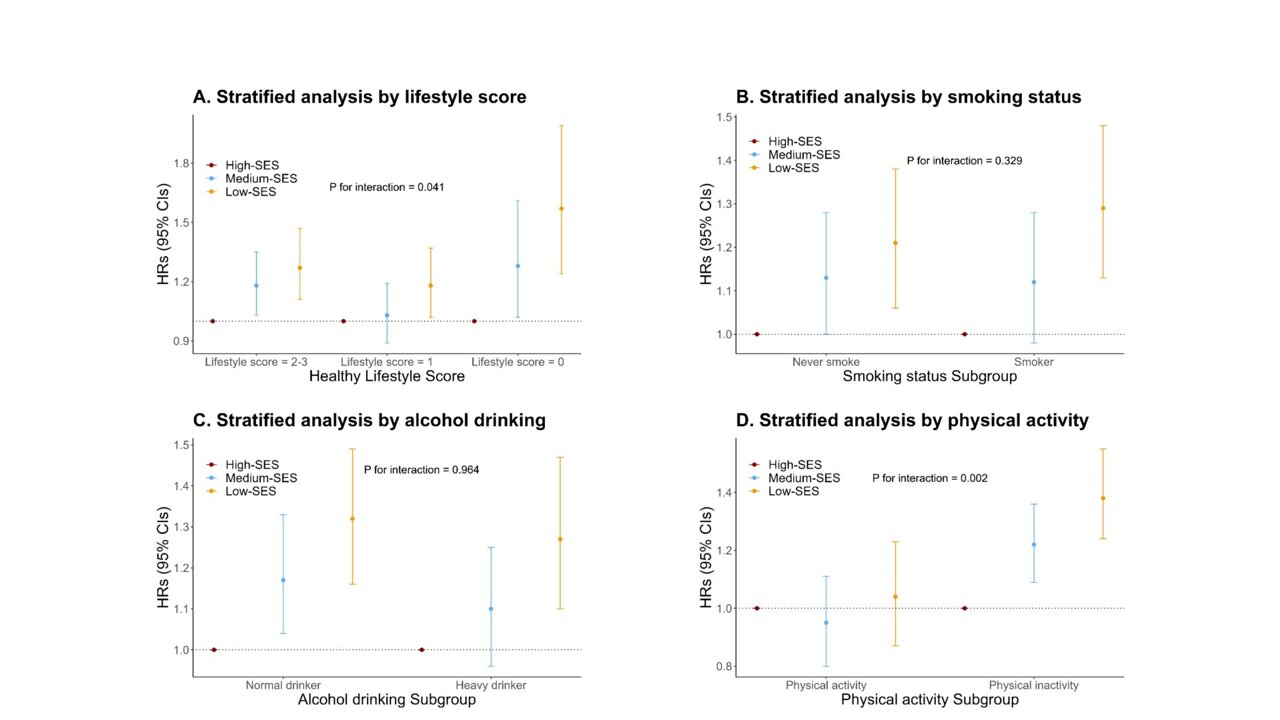
SOCIOECONOMIC INEQUALITY LINKED TO INCREASED RISK OF AGE-RELATED MACULAR DEGENERATION
A recent study conducted by researchers from Shanghai Jiao Tong University School of Medicine and Fudan University has revealed a significant association between socioeconomic status (SES) inequality and the risk of developing age-related macular degeneration (AMD).
Published in Health Data Science, the study highlights how a healthy lifestyle can mitigate some of the risks associated with low SES.
Socioeconomic disparities have long been a concern in various health outcomes. This study, led by Associate Research Fellow Huixun Jia and Professor Xiaodong Sun from the Department of Ophthalmology at Shanghai General Hospital, aims to investigate the impact of SES inequality on the incidence of AMD, a leading cause of blindness among the elderly. Previous studies suggested a potential link, but were limited by their cross-sectional design or small sample sizes.
Using data from the UK Biobank, the researchers conducted a prospective cohort study involving 316,663 middle-aged and elderly individuals. SES was determined through latent class analysis considering education, household income, and employment status. Healthy lifestyle factors, such as smoking, alcohol consumption, and physical activity (PA), were also examined.
"Our study identified a significant association between SES inequality and the incidence of AMD," said Huixun Jia. "Notably, the relationship was influenced by lifestyle behaviors, particularly physical activity. We found that smoking mediated the low SES-AMD association, while high alcohol consumption reduced the protective effect of high SES."
During the 12.2 years of follow-up, 6,355 participants were diagnosed with AMD. Those with medium and low SES had a 10% and 22% increased risk of AMD, respectively, compared to high SES individuals. Physical inactivity was found to exacerbate this association, highlighting the importance of promoting regular physical activity, especially among those with low SES.
"Our findings underscore the universal benefits of positive lifestyle adjustments," added Jia. "Encouraging physical activity and smoking cessation among individuals with low SES, and reducing alcohol consumption among high SES groups, could mitigate their susceptibility to AMD."
Looking ahead, the research team plans to explore additional preventive measures for AMD to reduce its disease burden. "Our ultimate goal is to enhance the quality of life for the elderly by addressing SES inequalities and promoting healthy lifestyle choices," said Professor Xiaodong Sun.
More information: Yanlin Qu et al, Associations of Socioeconomic Status Inequity with Incident Age-related Macular Degeneration in Middle-Aged and Elderly Population, Health Data Science (2024). DOI: 10.34133/hds.0148
Provided by Health Data Science
This story was originally published on Medical Xpress. Subscribe to our newsletter for the latest sci-tech news updates. 2024-09-16T15:22:28Z dg43tfdfdgfd